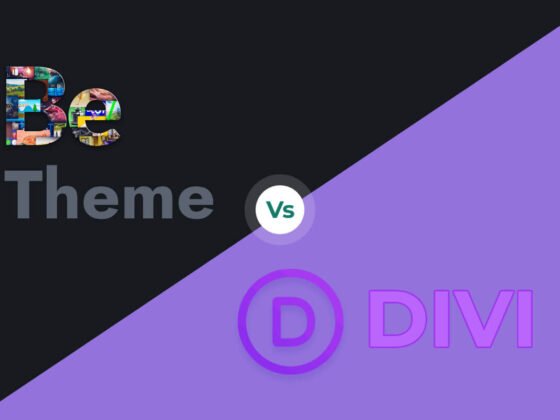Navigating the world of cloud computing can be overwhelming, especially with terms like SaaS, PaaS, and IaaS frequently being mentioned. Choosing the right cloud model is crucial for your business’s success, but understanding the differences between these options can help you make an informed decision. Whether you’re looking for ready-to-use software solutions, development platforms, or scalable infrastructure, each cloud model offers unique benefits. In this blog post, we’ll explore SaaS, PaaS, and IaaS, highlighting their key features and use cases to help you discover the right cloud model for your business needs.
Cost Structure
When evaluating SaaS, PaaS, and IaaS, understanding the cost structure of each cloud model is essential. The expenses associated with these services can significantly impact your business budget and overall strategy.
SaaS (Software as a Service):
SaaS typically operates on a subscription-based pricing model. This means you pay a recurring fee, usually monthly or annually, to access the software. The cost structure includes:
- Subscription Fees: Regular payments that cover software usage, maintenance, and updates.
- User-Based Pricing: Often, SaaS providers charge based on the number of users or seats.
- Additional Features: Some SaaS products offer premium features or add-ons at an extra cost.
The advantage of the SaaS cost structure is its predictability and simplicity. You avoid large upfront investments and benefit from regular updates and maintenance included in the subscription fee.
PaaS (Platform as a Service):
PaaS pricing is generally based on a pay-as-you-go model. You are charged for the resources you use, which can vary depending on your application’s needs. The cost structure includes:
- Resource Usage: Charges based on computing power, storage, and network bandwidth consumed.
- Development Tools: Some platforms may charge for additional development tools or services.
- Scaling Costs: Costs can increase as you scale your application and require more resources.
PaaS offers flexibility and cost-efficiency, especially for development teams that need to manage budgets while scaling applications. You only pay for what you use, which can be economical for businesses with variable workloads.
IaaS (Infrastructure as a Service):
IaaS also follows a pay-as-you-go pricing model, but with a focus on infrastructure resources. The cost structure includes:
- Compute Resources: Charges for virtual machines, CPU usage, and memory.
- Storage: Costs associated with data storage, including backups and archiving.
- Networking: Fees for data transfer, load balancing, and other network-related services.
IaaS provides the highest level of control and flexibility, allowing businesses to configure and manage their infrastructure. However, this also means that costs can fluctuate significantly based on usage patterns and demand. It is crucial to monitor and manage resource usage to avoid unexpected expenses.
Choosing the Right Cloud Model Based on Cost:
When deciding which cloud model is right for your business, consider your budget, the predictability of your expenses, and your ability to scale. SaaS offers a straightforward and predictable cost structure, making it ideal for businesses seeking simplicity. PaaS provides flexibility and cost-efficiency for development-focused teams. IaaS delivers the most control but requires careful management to optimize costs.
By understanding the cost structure of each cloud model, you can align your choice with your financial strategy and business goals, ensuring that you select the right cloud model for your needs.
Management and Maintenance
When selecting a cloud model for your business, understanding the management and maintenance requirements is crucial. The level of management and maintenance varies significantly between SaaS, PaaS, and IaaS, and this can impact your operational efficiency and resource allocation. Let’s delve into how each cloud model handles management and maintenance.
Software as a Service (SaaS)
In the SaaS cloud model, the provider manages nearly all aspects of the software environment. This includes the underlying infrastructure, application updates, security patches, and maintenance. As a user, you benefit from reduced management responsibilities, allowing you to focus on utilizing the software to meet your business needs. This hands-off approach makes SaaS ideal for businesses looking to minimize IT workload and ensure that applications are always up-to-date and secure.
Key Points:
- Provider handles all infrastructure and software maintenance.
- Regular updates and security patches are managed by the provider.
- Minimal management responsibilities for the user.
Platform as a Service (PaaS)
PaaS offers a balanced approach to management and maintenance. The provider manages the underlying infrastructure, operating systems, and middleware, while users focus on developing and maintaining their applications. This cloud model provides a robust platform with development tools, databases, and other services, reducing the burden of managing the infrastructure. However, users are still responsible for the management and maintenance of their applications, including code updates and configurations.
Key Points:
- Provider manages infrastructure, operating systems, and middleware.
- Users focus on developing and maintaining their applications.
- Reduced infrastructure management compared to IaaS.
Infrastructure as a Service (IaaS)
IaaS provides the highest level of control and flexibility, but it also requires the most management and maintenance effort. With the IaaS cloud model, the provider offers virtualized computing resources over the internet, such as virtual machines, storage, and networking. However, users are responsible for managing everything from the operating system up to the applications. This includes installing and maintaining the operating system, middleware, and applications, as well as handling security updates and patches. IaaS is ideal for businesses with complex, custom applications that require extensive control over their environment.
Key Points:
- Provider offers virtualized computing resources.
- Users manage the operating system, middleware, and applications.
- Highest level of control and customization, but also the highest management burden.
Conclusion
Choosing the right cloud model for your business involves understanding the management and maintenance responsibilities associated with SaaS, PaaS, and IaaS. Each cloud model offers different levels of control, customization, and maintenance requirements. By assessing your business needs and IT capabilities, you can select the cloud model that best aligns with your operational goals and resource availability.
Scalability
Scalability is a critical factor when choosing a cloud model for your business. It determines how easily and efficiently your infrastructure can grow with your business needs. Let’s explore how SaaS, PaaS, and IaaS compare in terms of scalability.
SaaS (Software as a Service)
SaaS offers excellent scalability for businesses looking for ready-to-use applications without the need for managing infrastructure. With SaaS, you can quickly scale up or down by adjusting your subscription plan to match your current needs. This cloud model is ideal for businesses experiencing rapid growth or seasonal fluctuations, as it allows you to add or remove users and features with ease. The focus here is on the seamless expansion of application use, making SaaS a flexible and scalable cloud model.
PaaS (Platform as a Service)
PaaS provides a highly scalable environment for developers and businesses focused on application development. This cloud model allows you to scale your applications easily by providing a robust platform that handles the underlying infrastructure. With PaaS, you can quickly scale your applications by leveraging built-in services such as load balancing, auto-scaling, and distributed databases. This flexibility makes PaaS an attractive cloud model for businesses needing to develop, test, and deploy applications efficiently.
IaaS (Infrastructure as a Service)
IaaS offers the highest level of scalability among the three cloud models. It provides businesses with virtualized computing resources that can be scaled up or down based on demand. With IaaS, you have full control over your infrastructure, allowing you to scale resources such as CPU, memory, storage, and network capacity to match your workload requirements. This cloud model is ideal for businesses with variable workloads or those that require significant computational power and storage. The ability to scale infrastructure dynamically makes IaaS a powerful and flexible cloud model for businesses of all sizes.
Conclusion
When it comes to scalability, each cloud model offers unique advantages. SaaS provides seamless application scalability, PaaS offers a scalable development platform, and IaaS delivers highly scalable infrastructure. By understanding these differences, you can choose the right cloud model that aligns with your business’s scalability needs, ensuring that your operations can grow efficiently and effectively.
Control and Customization
When it comes to control and customization, understanding how much power and flexibility each cloud model offers is essential for your business. Let’s delve into how SaaS, PaaS, and IaaS differ in this regard.
SaaS (Software as a Service)
Control: With SaaS, users have the least control over the software and infrastructure. The provider manages everything from the application to the underlying infrastructure.
Customization: SaaS solutions offer limited customization options. Users can typically configure settings within the application to suit their needs, but they cannot alter the core functionality or the underlying infrastructure. SaaS is ideal for businesses that need ready-to-use applications without the hassle of managing hardware or software maintenance.
PaaS (Platform as a Service)
Control: PaaS provides more control compared to SaaS. Users manage the applications they develop and deploy on the platform, while the provider takes care of the underlying infrastructure, middleware, and runtime environment.
Customization: PaaS offers a high degree of customization for developers. They can build, test, and deploy applications tailored to their specific needs using the tools and libraries provided by the platform. This makes PaaS an excellent choice for businesses that need a robust environment to develop custom applications without managing the infrastructure.
IaaS (Infrastructure as a Service)
Control: IaaS offers the highest level of control among the three cloud models. Users have full control over the operating systems, storage, and deployed applications. They manage the virtualized resources and are responsible for the maintenance and management of their applications and data.
Customization: IaaS provides unparalleled customization options. Businesses can tailor their infrastructure to meet their precise requirements, selecting specific computing resources, storage solutions, and network configurations. This level of customization is perfect for businesses with unique needs that demand full control over their cloud environment.
Choosing the Right Cloud Model for Control and Customization
The level of control and customization your business requires will heavily influence your choice of a cloud model. If you need minimal control and are looking for a hassle-free, ready-to-use application, SaaS is the way to go. For those needing a customizable platform for application development without worrying about infrastructure management, PaaS is an ideal choice. Finally, if your business demands full control over the infrastructure and extensive customization capabilities, IaaS will be the best fit.
Understanding these differences will help you choose the right cloud model, ensuring that your business can leverage the power of the cloud to meet its specific needs.
Deployment Speed
When it comes to deployment speed, the choice of the right cloud model can significantly impact how quickly you can get your applications up and running. Let’s examine how SaaS, PaaS, and IaaS differ in this critical area.
SaaS (Software as a Service):
SaaS solutions typically offer the fastest deployment speed among the three cloud models. Because SaaS applications are fully managed by the service provider and accessed via the internet, there’s no need for complex installations or configurations. Users can quickly sign up, log in, and start using the software immediately. This makes SaaS ideal for businesses looking for rapid implementation with minimal setup time.
PaaS (Platform as a Service):
PaaS provides a middle ground in terms of deployment speed. With PaaS, developers have access to a complete development and deployment environment in the cloud, including tools, middleware, and runtime environments. This significantly reduces the time needed to set up the infrastructure and allows developers to focus on coding and deploying applications faster. While there is some initial configuration required, it is generally more streamlined than managing a full infrastructure stack, making PaaS a good choice for businesses that need a balance between control and speed.
IaaS (Infrastructure as a Service):
IaaS offers the most control over infrastructure, but this can come at the cost of slower deployment speeds compared to SaaS and PaaS. With IaaS, businesses need to set up and manage virtual machines, storage, and networking resources. This often involves more complex configurations and longer setup times. However, for businesses that require complete control over their infrastructure and the ability to customize every aspect of their environment, the trade-off in deployment speed can be worth it.
Summary:
When considering deployment speed, SaaS stands out for its immediate usability, making it the fastest option to get started with. PaaS offers a quicker setup compared to IaaS while providing more control and flexibility for developers. IaaS, while slower to deploy initially, provides unmatched control over infrastructure, which can be crucial for certain business needs. Understanding these differences will help you select the right cloud model that aligns with your business’s deployment speed requirements.
Security and Compliance: Evaluating Cloud Models
When choosing a cloud model, security and compliance are critical factors that can significantly impact your business’s data protection and regulatory adherence. Each cloud model—SaaS, PaaS, and IaaS—offers different levels of control and responsibility regarding security and compliance.
1. SaaS (Software as a Service): In a SaaS model, security and compliance are primarily the responsibility of the service provider. SaaS vendors typically implement robust security measures, including data encryption, regular security updates, and compliance with industry standards. However, since you have limited control over the infrastructure and software, it’s essential to assess the provider’s security certifications and compliance with regulations relevant to your industry, such as GDPR, HIPAA, or PCI-DSS. Understanding what security features are included and what additional protections might be needed on your end is crucial for ensuring data safety and regulatory compliance.
2. PaaS (Platform as a Service): With PaaS, the responsibility for security is shared between the provider and the user. The provider manages the underlying infrastructure, including servers and networks, while you handle security within your applications and data. This model offers more control compared to SaaS, allowing you to implement additional security measures and compliance practices tailored to your specific needs. You need to ensure that the PaaS provider adheres to relevant compliance standards and offers tools and features that support your security requirements, such as identity management and encryption options.
3. IaaS (Infrastructure as a Service): IaaS provides the highest level of control over security and compliance, as you manage the entire infrastructure, including virtual machines, storage, and networks. This model offers flexibility to implement custom security measures and comply with various regulations according to your organization’s needs. However, it also means that you bear the responsibility for configuring and maintaining security settings, applying patches, and ensuring compliance with relevant standards. Choosing an IaaS provider that offers strong security features and compliance certifications can help simplify this task.
In summary, understanding the security and compliance implications of each cloud model is essential for selecting the right cloud model for your business. SaaS offers convenience but requires careful vetting of the provider’s security practices. PaaS provides a balance of control and responsibility, while IaaS offers the most flexibility but demands a higher level of management. By evaluating these factors, you can ensure that your chosen cloud model aligns with your security and compliance needs.
Use Cases and Applications
When it comes to selecting the right cloud model for your business, understanding the use cases and applications of SaaS, PaaS, and IaaS is essential. Each cloud model offers distinct advantages depending on the specific needs of your organization. Here’s a closer look at how each cloud model can be applied effectively:
1. Software as a Service (SaaS)
SaaS is ideal for businesses that need ready-to-use software applications without the hassle of managing underlying infrastructure or software maintenance. Common use cases for SaaS include:
- Customer Relationship Management (CRM): Platforms like Salesforce and HubSpot offer CRM solutions that help businesses manage customer interactions and sales processes efficiently.
- Email and Collaboration Tools: Services such as Gmail, Microsoft Office 365, and Slack provide robust communication and collaboration tools, facilitating seamless teamwork and productivity.
- Accounting and Finance: Applications like QuickBooks and Xero allow businesses to manage financial operations, from invoicing to expense tracking, with minimal setup and maintenance.
2. Platform as a Service (PaaS)
PaaS is suited for developers and teams that need a platform to build, deploy, and manage applications without dealing with the underlying hardware or software layers. Key use cases for PaaS include:
- Application Development: Tools like Google App Engine and Microsoft Azure App Service offer development environments that streamline the process of creating and deploying custom applications.
- Testing and Deployment: PaaS platforms provide environments for testing applications before launch, helping to ensure that software is reliable and scalable.
- Data Management: Services such as Heroku and Red Hat OpenShift support database management and analytics, enabling developers to focus on coding while the platform handles data storage and processing.
3. Infrastructure as a Service (IaaS)
IaaS provides flexible and scalable computing resources over the internet, making it ideal for businesses with dynamic infrastructure needs. Common applications for IaaS include:
- Web Hosting: Platforms like Amazon Web Services (AWS) and Microsoft Azure offer scalable hosting solutions for websites and web applications, accommodating varying traffic levels and performance requirements.
- Big Data Processing: IaaS allows businesses to harness vast computing power for processing and analyzing large datasets, which is crucial for data-intensive applications and machine learning models.
- Disaster Recovery: IaaS provides backup and disaster recovery solutions, ensuring that your business can quickly recover from hardware failures or data loss without investing in physical infrastructure.
By understanding these use cases and applications, you can better align your business needs with the appropriate cloud model. Whether you require the convenience of SaaS, the development flexibility of PaaS, or the scalable infrastructure of IaaS, selecting the right cloud model will optimize your operations and support your growth objectives.













